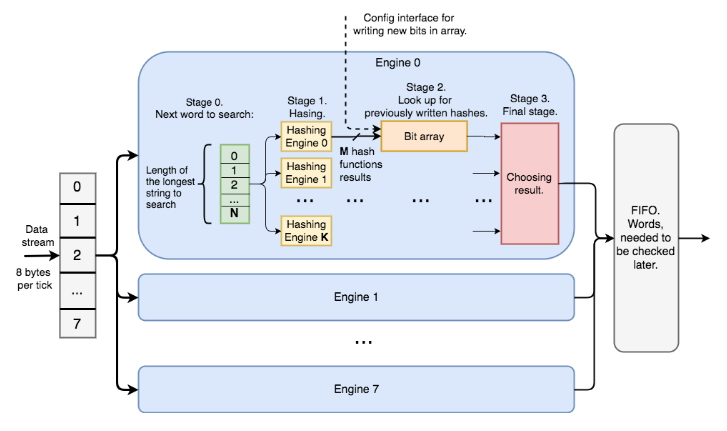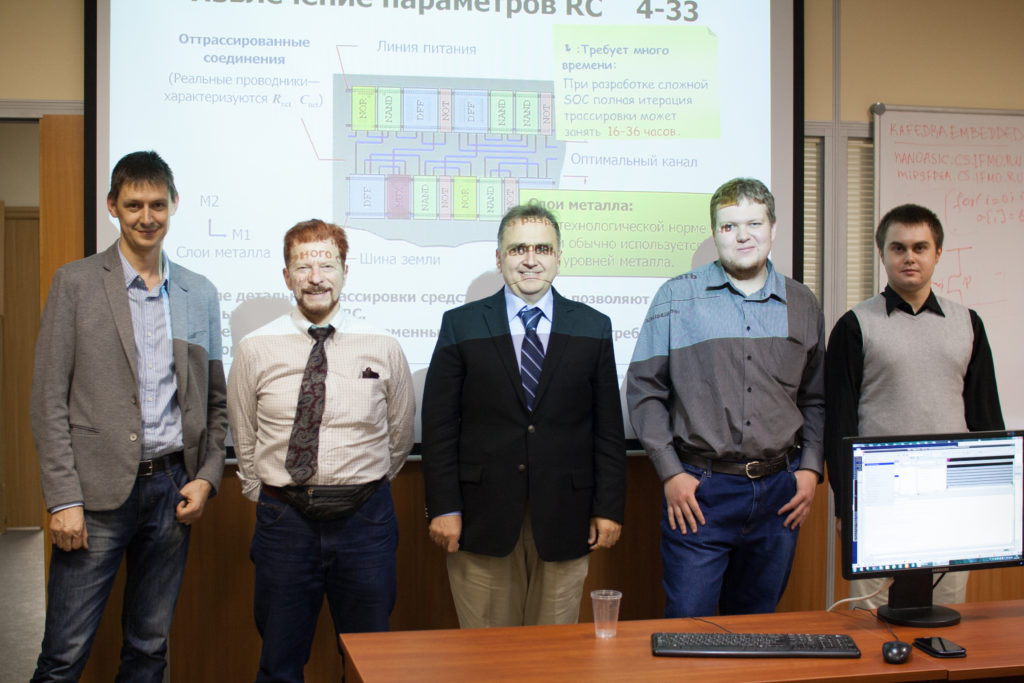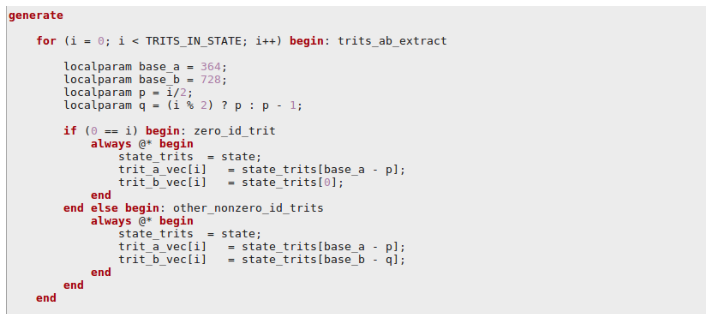Russian and Ukrainian teams took over Europe at the European finals of Intel's InnovateFPGA competition
Gold went to Russia, silver was divided by Russia and Italy, bronze went to Ukraine. These are the results of the European finals of the prestigious InnovateFPGA competition under the auspices of Intel. The winners will travel to California, where they will meet with finalists from America and Asia. I hope, now it will not be necessary to explain on Habré why Verilog and FPGA / FPGA are strategically important, despite the fact that "there are more vacancies for Java".
Students who are now doing projects on FPGAs will in a few years make massive microcircuits for self-managed cars, accelerators of neural networks, augmented reality and other applications that a conventional processor cannot handle. That is why Intel spent $ 16.7 billion on the purchase of Altera and entry into the FPGA market. And the other day Intel also bought eASIC for cheap conversion of designs from FPGA to ASIC (there is a fairly large Russian team in eASIC).
The victory of the Russian and Ukrainian teams in the Intel competition InnovateFPGA did not arise from scratch, but as a result of the work of specific people in LETI, ITMO, KPI and other places that already had articles on Habré. If you continue these initiatives and expand the FPGA teaching and instrument description languages to all technical universities from Kaliningrad to Yakutia, from Lviv to Tbilisi and Astana - then in a couple of decades it can change the balance of power in the global electronics industry in about the same way as the work of Kurchatov and Korolev changed the balance of power in the global nuclear industry and space exploration.
')

The first Russian project, which received InnovateFPGA gold at the European finals, uses FPGAs to enhance the quality of the video image. The same scene is filmed into two cameras with different shutter speeds, after which the frame streams from them are combined in real time. In this case, the overexposed areas of one stream are compensated by an image with a normal exposure from another, darker stream, and too dark areas of the second stream are corrected by an image from the first, lighter stream. At the same time, the developers correct parallax:

This project was made by Vladislav Sharshin and Andrei Papushin, who, according to Google, are associated with the St. Petersburg LETI.
LETI PLIS has been taught for a long time; in particular, well-known authors of FPGA textbooks Evgeny Ugryumov, Rostislav Grushvitsky and Alexander Mursayev work in it. Here is my photo of Rostislav Grushvitsky (left) at a seminar in St. Petersburg ITMO University (see the post on Habré “Journey through microelectronic Russia (academic part)” ). Right: Alexander Filippov from the Macro Group, official representative of Xilinx in Russia:

By the way about Xilinx. Xilinx is a competitor for Altera / IntelFPGA. In principle, the highest-speed FPGAs have always been at Xilinx, but recently Xilinx has established a very complicated bureaucratic procedure for purchasing educational boards with Xilinx FPGA in Russia. With some kind of test for non-use of boards for dual use, which takes 4 months (data for 2016). The most strange thing is that I checked with a lawyer that for educational boards with Xilinx Artix-7 FPGA, no additional export license is required by the American export control. That is, this is an initiative of the Xilinx company itself. Well, well, then Xilinx deserved the future loss of Intel / Alter on the Russian market: student boards with Intel / Altera FPGA in Russia are sold freely.
Silver at the European round of InnovateFPGA received a team from the St. Petersburg ITMO University: Maxim Tolkachev, Alexander Nasida, Damir Zakirov. They have done on the FPGA text search accelerator in the stream of network packets:

ITMO University won, too, not from scratch: they always hold seminars and other events on FPGAs, high-level synthesis and ASIC. The staff of ITMO University helped translate the textbook by David Harris and Sarah Harris “Digital Circuit Design and Computer Architecture” , which was quickly adapted by a large number of Russian universities as a basis for learning the microarchitecture hardware description languages, with labs on FPGA / FPGA. Here is the left - Pavel Kustarev from ITMO, key editor of the 4th chapter of this textbook:

Bronze at the European InnovateFPGA, received a team from the Kiev Polytechnic Institute - Sergei Sachov and Yevgeny Korotky. They used FPGAs for hardware acceleration of micropayments of cryptocurrency from a device for the Internet of things. A piece of code in the Verilog hardware description language from the KPI project at InnovateFPGA

Before we won Intel's InnovateFPGA, Sergei Sachov won the MIPSfpga hackathon, which we conducted together with Yevgeny Korotky. Here is a photo from the post on Habré "Hakaton of a new type tried in Kiev, it is planned to repeat this experience in Russia . " From left to right on the hackathon in Kiev: Sergey Sachov, Valera Marchenko, your humble servant and Yevgeny Korotky:

KPI staff also participated in translating slides for lecturers as a supplement to the Harris & Harris textbook.
If not all of these projects (courses at LETI, Harris & Harris and MIPSfpga at ITMO and KPI), the wins of all the first three places at the European final of Intel's InnovateFPGA would most likely not be, and the French, Germans and British would appear in the InnovateFPGA top , not Russians and Ukrainians. After that, people would say that designing digital logic is for Apple in Cupertino with its iPhones, and not for Russia.
By the way about Apple. Here he lived in Zhukovsky 25-year-old Baumanka graduate Ilya Neganov. He worked in Tupolev, developed devices for testing aviation equipment using FPGA / FPGA. At the end of 2011, I met him in Moscow and handed him the same textbook Harris & Harris. Ilya made a simple processor for it (reminiscent of one of the schoolMIPS variants from Stanislav Gelio). Then Ilya settled in Imagination Technologies and participated in the design of the MIPS I6400 / I6500 processor core. And now Ilya is working at Apple, making a graphics processor for future iPhones and iPads. Here is a visual proof of the FPGA + Harris & Harris thesis = entry to the chips for mass gadgets.
All these technologies need to be introduced into education not only in top universities (Moscow State University, MIPT, MIET, etc.), but much wider, even to physical schools. And do not say "let's first Arduino / Rasberry Pie / STM32". Programming microcontrollers and embedded microprocessors to the use of FPGAs is completely orthogonal. No amount of programming Arduino will replace the digital circuitry on the FPGA, these are different things, like singing and drawing. And yes, FPGA can be used by advanced grade 9 students. Here is the video of the ninth-grader Arseny Chegodaev and the ninth-grader Daria Krivoruchko, who made projects on the FPGA at the Novosibirsk Summer School for Young Programmers. At 10:40 am: the ninth-grader added instructions to the processor described in the Verilog hardware description language, synthesized this processor for implementation on the FPGA and made a report at the conference in Tomsk on this occasion (see the post “2017 Siberian and Kazakhstan Microelectronics of 2017 on Habré : Verilog, ASIC and FPGA in Tomsk, Novosibirsk and Astana ” ):
FPGA is not only a niche way to implement signal processing and similar applications. For students, the FPGA is an input to the microarchitecture of processors, the development of digital logic at the level of register transfers, the development of algorithms for automating the design of microchips, the creation of IP blocks, and much more. After working with FPGA, it is also easier to understand CGRA - Coarse Grained Reconfigurable Architecture - newfangled structures for accelerating neural networks that work not at the level of individual signals, like FPGA, but at the level of buses with many signals and tens of thousands of arithmetic devices (see the post on Habré "Live reporting from the birth of a major player in hardware AI, which accelerates TensorFlow and competes with NVidia" ).
If (suppose) tomorrow, Putin writes out a check for $ 17 billion dollars and buys Factory 18 at TSMC, which is being built to produce 7 and 5 nanometer chips, then this money will be wasted, because Russia doesn’t have personnel to service it either. for placing orders on it. But if you teach a lot of students a variety of technologies for designing systems on a chip, starting with exercises on FPGA / FPGA, then in some time in Russia, Ukraine and other close countries there will be enough specialists to form hundreds of companies of various sizes that will design smart chips for domestic market and for export. Then the advanced factory will come in handy.
Students who are now doing projects on FPGAs will in a few years make massive microcircuits for self-managed cars, accelerators of neural networks, augmented reality and other applications that a conventional processor cannot handle. That is why Intel spent $ 16.7 billion on the purchase of Altera and entry into the FPGA market. And the other day Intel also bought eASIC for cheap conversion of designs from FPGA to ASIC (there is a fairly large Russian team in eASIC).
The victory of the Russian and Ukrainian teams in the Intel competition InnovateFPGA did not arise from scratch, but as a result of the work of specific people in LETI, ITMO, KPI and other places that already had articles on Habré. If you continue these initiatives and expand the FPGA teaching and instrument description languages to all technical universities from Kaliningrad to Yakutia, from Lviv to Tbilisi and Astana - then in a couple of decades it can change the balance of power in the global electronics industry in about the same way as the work of Kurchatov and Korolev changed the balance of power in the global nuclear industry and space exploration.
')

The first Russian project, which received InnovateFPGA gold at the European finals, uses FPGAs to enhance the quality of the video image. The same scene is filmed into two cameras with different shutter speeds, after which the frame streams from them are combined in real time. In this case, the overexposed areas of one stream are compensated by an image with a normal exposure from another, darker stream, and too dark areas of the second stream are corrected by an image from the first, lighter stream. At the same time, the developers correct parallax:

This project was made by Vladislav Sharshin and Andrei Papushin, who, according to Google, are associated with the St. Petersburg LETI.
LETI PLIS has been taught for a long time; in particular, well-known authors of FPGA textbooks Evgeny Ugryumov, Rostislav Grushvitsky and Alexander Mursayev work in it. Here is my photo of Rostislav Grushvitsky (left) at a seminar in St. Petersburg ITMO University (see the post on Habré “Journey through microelectronic Russia (academic part)” ). Right: Alexander Filippov from the Macro Group, official representative of Xilinx in Russia:

By the way about Xilinx. Xilinx is a competitor for Altera / IntelFPGA. In principle, the highest-speed FPGAs have always been at Xilinx, but recently Xilinx has established a very complicated bureaucratic procedure for purchasing educational boards with Xilinx FPGA in Russia. With some kind of test for non-use of boards for dual use, which takes 4 months (data for 2016). The most strange thing is that I checked with a lawyer that for educational boards with Xilinx Artix-7 FPGA, no additional export license is required by the American export control. That is, this is an initiative of the Xilinx company itself. Well, well, then Xilinx deserved the future loss of Intel / Alter on the Russian market: student boards with Intel / Altera FPGA in Russia are sold freely.
Silver at the European round of InnovateFPGA received a team from the St. Petersburg ITMO University: Maxim Tolkachev, Alexander Nasida, Damir Zakirov. They have done on the FPGA text search accelerator in the stream of network packets:

ITMO University won, too, not from scratch: they always hold seminars and other events on FPGAs, high-level synthesis and ASIC. The staff of ITMO University helped translate the textbook by David Harris and Sarah Harris “Digital Circuit Design and Computer Architecture” , which was quickly adapted by a large number of Russian universities as a basis for learning the microarchitecture hardware description languages, with labs on FPGA / FPGA. Here is the left - Pavel Kustarev from ITMO, key editor of the 4th chapter of this textbook:

Bronze at the European InnovateFPGA, received a team from the Kiev Polytechnic Institute - Sergei Sachov and Yevgeny Korotky. They used FPGAs for hardware acceleration of micropayments of cryptocurrency from a device for the Internet of things. A piece of code in the Verilog hardware description language from the KPI project at InnovateFPGA

Before we won Intel's InnovateFPGA, Sergei Sachov won the MIPSfpga hackathon, which we conducted together with Yevgeny Korotky. Here is a photo from the post on Habré "Hakaton of a new type tried in Kiev, it is planned to repeat this experience in Russia . " From left to right on the hackathon in Kiev: Sergey Sachov, Valera Marchenko, your humble servant and Yevgeny Korotky:

KPI staff also participated in translating slides for lecturers as a supplement to the Harris & Harris textbook.
If not all of these projects (courses at LETI, Harris & Harris and MIPSfpga at ITMO and KPI), the wins of all the first three places at the European final of Intel's InnovateFPGA would most likely not be, and the French, Germans and British would appear in the InnovateFPGA top , not Russians and Ukrainians. After that, people would say that designing digital logic is for Apple in Cupertino with its iPhones, and not for Russia.
By the way about Apple. Here he lived in Zhukovsky 25-year-old Baumanka graduate Ilya Neganov. He worked in Tupolev, developed devices for testing aviation equipment using FPGA / FPGA. At the end of 2011, I met him in Moscow and handed him the same textbook Harris & Harris. Ilya made a simple processor for it (reminiscent of one of the schoolMIPS variants from Stanislav Gelio). Then Ilya settled in Imagination Technologies and participated in the design of the MIPS I6400 / I6500 processor core. And now Ilya is working at Apple, making a graphics processor for future iPhones and iPads. Here is a visual proof of the FPGA + Harris & Harris thesis = entry to the chips for mass gadgets.
All these technologies need to be introduced into education not only in top universities (Moscow State University, MIPT, MIET, etc.), but much wider, even to physical schools. And do not say "let's first Arduino / Rasberry Pie / STM32". Programming microcontrollers and embedded microprocessors to the use of FPGAs is completely orthogonal. No amount of programming Arduino will replace the digital circuitry on the FPGA, these are different things, like singing and drawing. And yes, FPGA can be used by advanced grade 9 students. Here is the video of the ninth-grader Arseny Chegodaev and the ninth-grader Daria Krivoruchko, who made projects on the FPGA at the Novosibirsk Summer School for Young Programmers. At 10:40 am: the ninth-grader added instructions to the processor described in the Verilog hardware description language, synthesized this processor for implementation on the FPGA and made a report at the conference in Tomsk on this occasion (see the post “2017 Siberian and Kazakhstan Microelectronics of 2017 on Habré : Verilog, ASIC and FPGA in Tomsk, Novosibirsk and Astana ” ):
FPGA is not only a niche way to implement signal processing and similar applications. For students, the FPGA is an input to the microarchitecture of processors, the development of digital logic at the level of register transfers, the development of algorithms for automating the design of microchips, the creation of IP blocks, and much more. After working with FPGA, it is also easier to understand CGRA - Coarse Grained Reconfigurable Architecture - newfangled structures for accelerating neural networks that work not at the level of individual signals, like FPGA, but at the level of buses with many signals and tens of thousands of arithmetic devices (see the post on Habré "Live reporting from the birth of a major player in hardware AI, which accelerates TensorFlow and competes with NVidia" ).
If (suppose) tomorrow, Putin writes out a check for $ 17 billion dollars and buys Factory 18 at TSMC, which is being built to produce 7 and 5 nanometer chips, then this money will be wasted, because Russia doesn’t have personnel to service it either. for placing orders on it. But if you teach a lot of students a variety of technologies for designing systems on a chip, starting with exercises on FPGA / FPGA, then in some time in Russia, Ukraine and other close countries there will be enough specialists to form hundreds of companies of various sizes that will design smart chips for domestic market and for export. Then the advanced factory will come in handy.
Source: https://habr.com/ru/post/417495/
All Articles